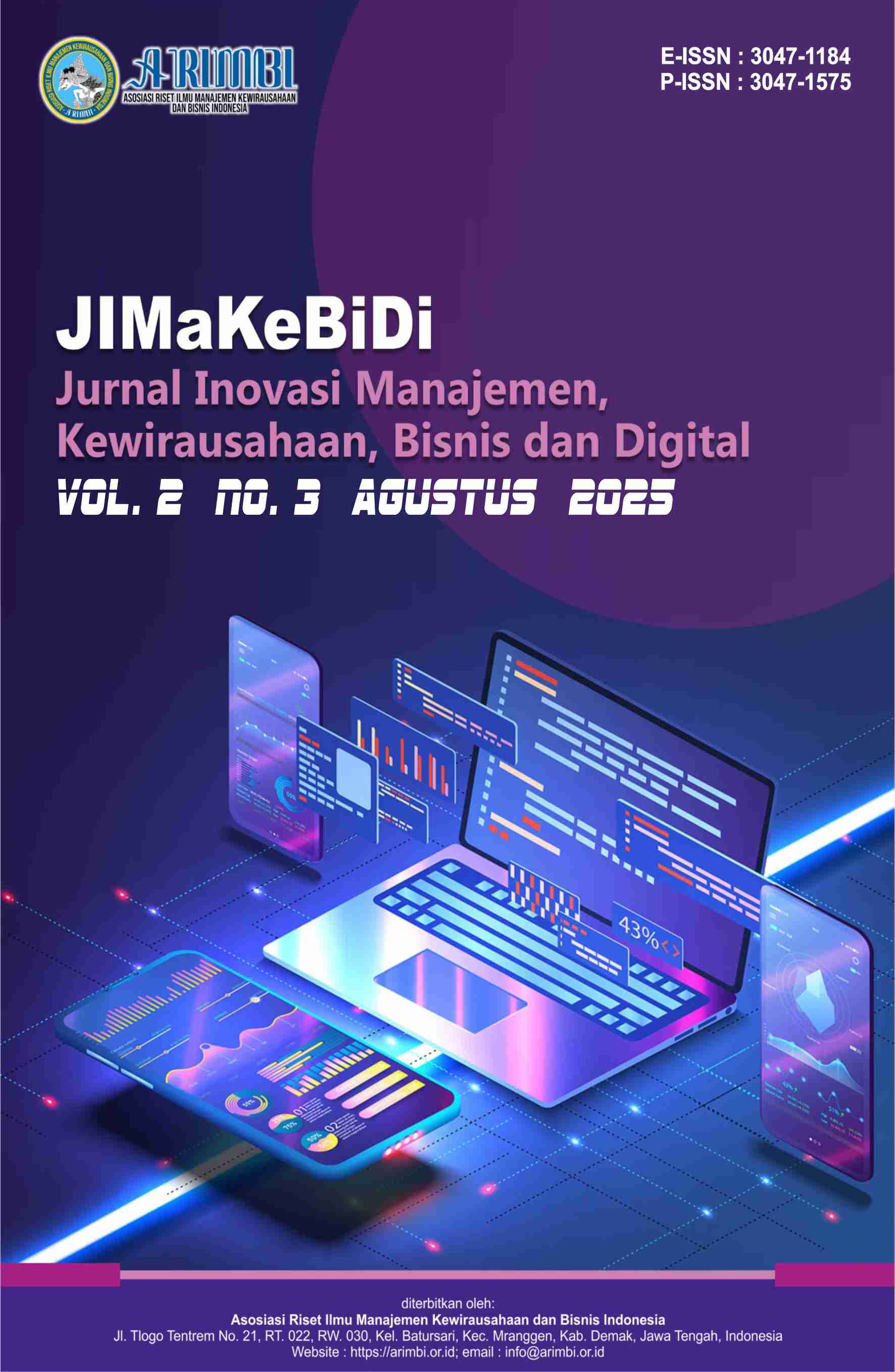Merancang Loyalitas Pelanggan Melalui Pengalaman dan Keterikatan Emosional
Studi pada Bakmi Chao Guo Kota Malang
DOI:
https://doi.org/10.61132/jimakebidi.v2i3.694Keywords:
Culinary, Customer experience, Customer loyalty, Emotional bonding, MalangAbstract
This study aims to analyze the influence of customer experience on customer loyalty mediated by emotional bonding in Bakmi Chao Guo customers in Malang City. In a highly competitive culinary industry, customer loyalty is one of the important elements in maintaining and improving business continuity. Bakmi Chao Guo, as one of the culinary business actors, already has a number of regular customers who make regular visits every quarter. However, the number of visits still does not reach the company's optimal target, which is 450 visits per quarter. This shows that despite the presence of loyal customers, a more appropriate strategy is still needed to significantly increase the frequency of visits. This study uses a quantitative approach with a survey method of 120 respondents who are active customers of Bakmi Chao Guo. The data analysis technique used is Structural Equation Modeling–Partial Least Square (SEM-PLS) to test the relationship between research variables, namely customer experience, emotional bonding, and customer loyalty. The results of the study show that customer experience has a positive and significant influence on customer loyalty, both directly and indirectly through the mediation variable of emotional bonding. A fun and memorable customer experience creates a strong emotional bond, which ultimately encourages customers to stay loyal and make repeat purchases. These findings provide important managerial implications for Bakmi Chao Guo managers and other culinary business actors, namely the need to focus on creating consistent, personalized, and meaningful customer experiences. In addition, building a close emotional connection between customers and brands will be a decisive factor in creating sustainable long-term loyalty amid ever-evolving market competition.
Downloads
References
Anisa, A. R., & Oktini, D. R. (2020). Pengaruh customer experience terhadap customer loyalty pada Warunk Upnormal cabang Buah Batu Bandung. Jurnal, 6(1).
Aprihatiningrum, W. O. S., dkk. (n.d.). Loyalitas dan Kepuasan Konsumen.
Armand, F. (2003). Social marketing models for product-based reproductive health programs: A comparative analysis (Occasional Paper Series). Washington, DC. Retrieved from http://www.cmsproject.com
Assael, H. (1998). Consumer behavior and marketing action (6th ed.). South-Western Pub.
Bator, R. J., Bryan, A. D., & Schultz, P. W. (2011). Who gives a hoot?: Intercept surveys of litterers and disposers. Environment and Behavior, 43(3), 295-315. https://doi.org/10.1177/0013916509356884
Belair, A. R. (2003). Shopping for your self: When marketing becomes a social problem
Chin, W. W. (1998). The partial least squares approach for structural equation modeling. In G. A. Marcoulides (Ed.), Modern methods for business research (pp. 295-358). Lawrence Erlbaum Associates.
Chintia, A., Hussein, A. S., & Suryadi, N. (2022). The effect of experience quality on customer loyalty mediated by emotion: A study on ethnic restaurant consumers in Malang City. Jurnal Internasional Penelitian Bisnis dan Ilmu Sosial, 11(7), 17-22. https://www.ssbffnet.com/ojs/index.php/ijrbs https://doi.org/10.20525/ijrbs.v11i7.2051
Cooper, D. R., & Schindler, P. S. (2014). Business research methods (12th ed.). McGraw-Hill.
Creswell, J. W. (2014). Research design: Qualitative, quantitative, and mixed methods approaches (4th ed.). Sage Publications.
Hidayati, S. N. (2016). Pengaruh pendekatan keras dan lunak pemimpin organisasi terhadap kepuasan kerja dan potensi mogok kerja karyawan. Jurnal Maksipreneur: Manajemen, Koperasi, dan Entrepreneurship, 5(2), 57-66. https://doi.org/10.30588/jmp.v5i2.164
Kotler, P., & Lee, N. R. (2009). Up and out of poverty: The social marketing solution. Pearson Education, Inc.
Lindawati. (2015). Analisis faktor yang mempengaruhi perilaku ekonomi dan kesejahteraan rumah tangga petani usahatani terpadu padi-sapi di Provinsi Jawa Barat [Tesis, Institut Pertanian Bogor]. http://repository.ipb.ac.id/handle/123456789/85350
Norsyaheera, A. W., Lailatul, F. A. H., Shahid, S. A. M., & Maon, S. N. (2016). The relationship between marketing mix and customer loyalty in hijab industry: The mediating effect of customer satisfaction. Procedia Economics and Finance, 37, 366-371. https://doi.org/10.1016/S2212-5671(16)30138-1
Risdwiyanto, A., & Kurniyati, Y. (2015). Strategi pemasaran perguruan tinggi swasta di Kabupaten Sleman Yogyakarta berbasis rangsangan pemasaran. Jurnal Maksipreneur: Manajemen, Koperasi, dan Entrepreneurship, 5(1), 1-23. http://dx.doi.org/10.30588/SOSHUMDIK.v5i1.142
Downloads
Published
How to Cite
Issue
Section
License
Copyright (c) 2025 Jurnal Inovasi Manajemen, Kewirausahaan, Bisnis dan Digital

This work is licensed under a Creative Commons Attribution-ShareAlike 4.0 International License.





